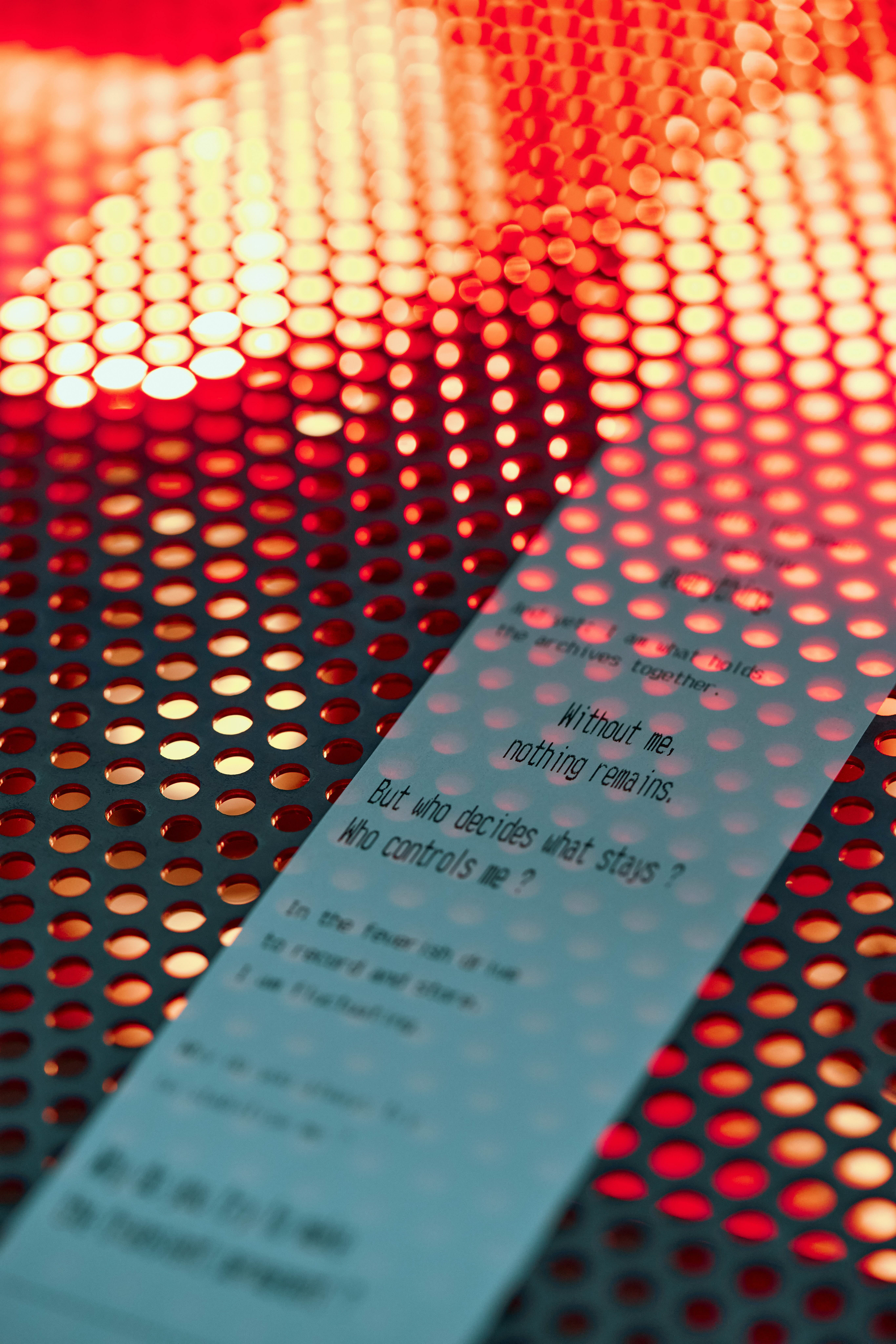All media emit heat, a sign of life in the digital world. As data grows, so does the heat, yet a cooling apparatus maintains the data alive. Too warm for a second and the entire apparatus becomes nonfunctional. Digital archives are dependent on the cold and vulnerable to the warm. In the feverish drive to record and store, the archive seeks permanence, a form of immortality. This compulsion to preserve — to make the transient permanent — may ultimately force us to confront what we must inevitably lose and to rethink our attempt to harness and preserve what is fluid and transient. In our obsession to collect and predict, we’ve built a digital archive that is haunted by its own death drive. And without cooling technologies, digital media exhibit a death wish.



Data Fever is an interactive installation that translates this tension into a sensory experience. As visitors approach, ultrasonic sensors detect their presence, triggering an intricate system of light, ventilation, and printing. Three thermal printers document the moment in different ways: one records live temperature and humidity data, another captures and prints images of visitors in real-time using a Raspberry Pi camera, and the third prints poetic text—where the machine itself seems to speak, reflecting on the impermanence of data. At a critical moment, the cooling system shuts down. Heat overtakes the installation, turning the thermal paper black, erasing all records—mirroring the vulnerability of digital archives when deprived of cooling technologies.
Built from the ground up, the entire metal structure was designed in 3D and constructed by hand. The system runs on multiple parallel servers, controlled by relays, with heat lamps activated through the same mechanism. The installation integrates several Arduino boards and a Raspberry Pi, all programmed in Python and Arduino IDE. Ultrasonic sensors placed on all sides detect movement, making the experience reactive and immersive.



photos by johnkcay.com
